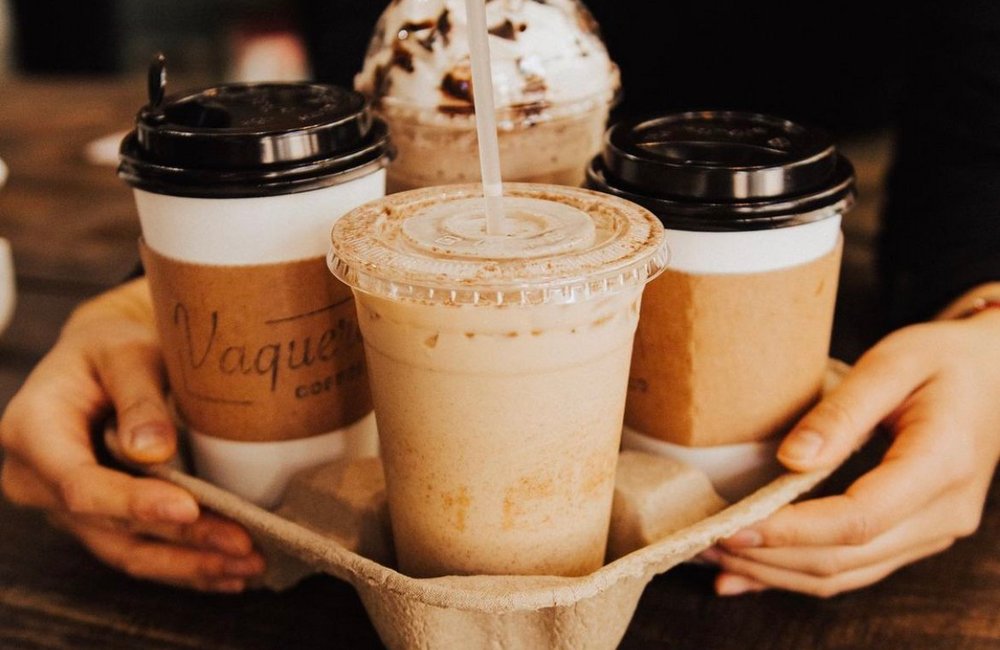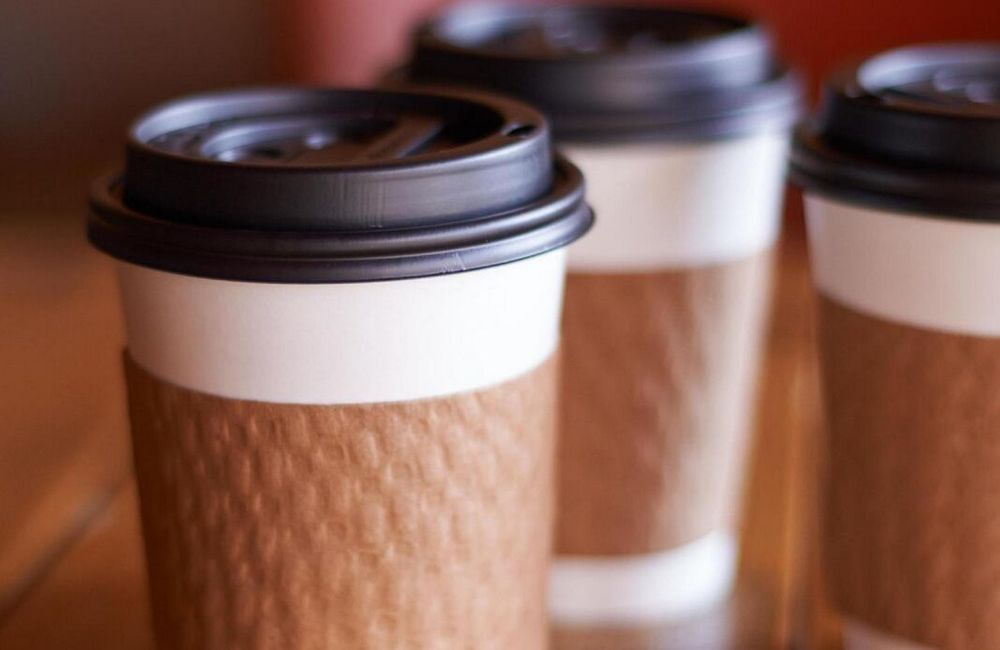Disposable cups and drinkware are found in restaurants and fast-food chains across the world. If you have to grab your coffee from Dunkin, Starbucks, Wawa, or somewhere similar to start your day off right, you are using disposable drinkware.
However, have you ever stopped to think about:
- What are coffee cups made of?
- What are straws made from?
There's a hidden secret behind disposable drinkware that needs to be addressed.

A Looming Secret of Disposable Drinkware
Many people don’t know coffee cup recycling facts, and most assume that since there’s a recycling symbol on the cup, it’s recyclable. However, the cardboard cups that hold your coffee actually have a very thin plastic liner in them.
The plastic liner is responsible for making the cup “waterproof” or “coffeproof” in this case.
So, what’s the problem?
- Cardboard can be recycled
- Plastic can be recycled
However, every recycling facility has different capabilities. Some may be able to recycle your disposable drinking cups and others cannot. Consumers cannot control where their disposable cups go because most will put them in the nearest recycling bin if they’re walking through the city.
Unfortunately, some of the cups will go to a processing facility that can handle the recycling, while others cannot.
Furthermore, if one of your cups does make it into the wrong recycling facility, it will contaminate all of the cups in the batch, causing none of them to be recycled. Some facilities will filter the cups to help reduce this risk of contamination.
If you don’t think coffee cups are a big deal, consider this fact: the United States throws away 50 billion coffee cups annually.
We offer responsible disposable drinkware in our catalog that helps reduce the risk of items ending up in a landfill. Of course, there are other items that we offer that can be recycled and used for drinkware:
- Stirring sticks made of wood
- Straws
- Lids
- Etc.
Imagine all the people who don’t have access to recycling plants, too. For example, you may sort your waste at home and recycle it. Workplaces in some areas do not have options for recycling, and if a person brings coffee to work every day or uses the drinkware provided by their employer, drinking a single cup of coffee daily can lead to 250+ entering landfills per year.
With over 7 billion people, that is a lot of waste.

How to Be Responsible with Disposable Drinkware
Consumers and restaurant owners have the power to use drinkware responsibly. Restaurant owners have more power in this regard because they can offer disposable drinking cups and other items that make it easier for their customers to recycle.
A few of the many ways that you can begin having an impact on the world with responsible recycling include:
Consider Reusable Cups
First and foremost, the absolute best way to reduce waste is going to be reusable cups. As a restaurant owner, you can sell these cups and promote the ability to use reusable cups in your restaurant.
Consumers can purchase these cups and take the initiative to only frequent restaurants that allow reusable cups.
The trend is like anything else, and it will take time to adapt to this new habit. It's much easier to go to a coffee shop and not worry about bringing your own cup in. However, there are a few perks of reusable cups, too:
- Choose a cup that helps keep liquids cool or warm
- Less overall waste
- Always have a drink
Even if you don’t have much space or a place to carry one of the more advanced cups, you’ll also find foldable options that shrink to a small size. Simply unfold the cup, fill it with liquid, and then fold it back down when you’re done with it.
You will need to make a routine out of using the reusable cup, but it’s well worth the reduction in waste.
Remain Cautious of the Drinkware’s Material
Choosing the right materials for your reusable drinkware is also important. You'll want to consider items that will last for years and have the lowest risk of breakage. For example, you’ll find many options that come in:
- Bamboo
- Silicone
- Plastic
- Ceramics
- Glass
Glass or ceramic can break, but they will also last a very long time. Lids often come in plastic or similar material, and they may need to be replaced every few years. Compared to plastic, these materials will also have a lower impact on the environment when they do end up in landfills.

How to Properly Dispose of Disposable Cups
Disposable cups and drinkware may be unavoidable in many cases, but you can choose a responsible method of disposal. If you don’t know what to do with your utensils, cups, or straws, consider the following:
- Styrofoam should simply be placed in the trash because of its inability to be recycled or extreme difficulty. Even though this material can be recycled, the process is inefficient and costly, so most facilities will not recycle them.
- Plastic is often placed in the trash, too. However, if you do see #5 on the plastic cup, you can recycle it.
- Paper cups seem like they would be easy to recycle, but they often contain an internal coating of wax or plastic, and these coatings are not recyclable. The solution here is to also discard the paper cups in the trash.
- BPI-certified compostable may be found on your cups, too. These cups can be composted at your own home, or you can also bring these cups to the food scrap collection facility. You may also find straws that have BPI certification on them, and you can compost them.
Cardboard coffee sleeves can be recycled and placed in your recycling bin. However, you will want to discard your plastic straws and any utensils that do not have a BPI compostable certification.
Disposable drinkware can be concerning when you find out that a lot of it ends up in landfills because recycling facilities cannot process the plastic in the cup. The tips above can help you make a responsible choice when drinking coffee or other drinks.


